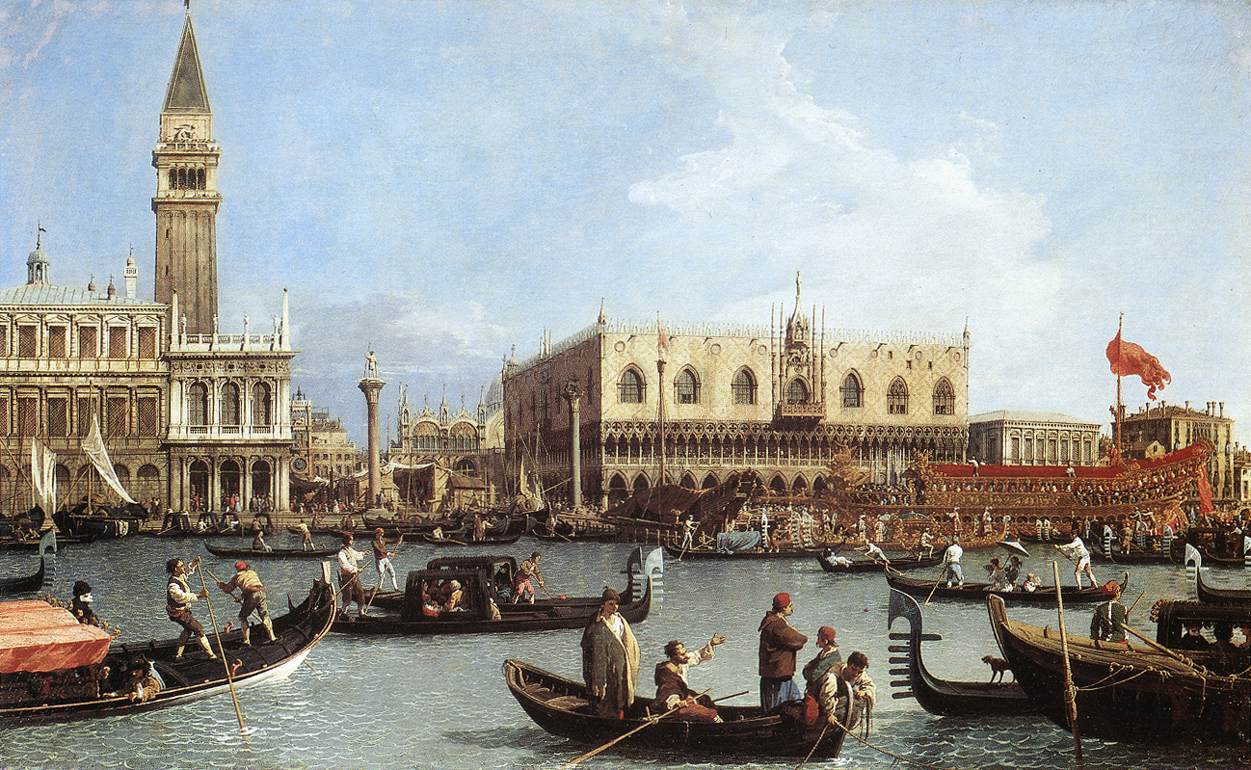Veneto : Overview
Venice was very stable politically and economically in contrast to many other cities in Trecento Italy. Venice is made up of marshy islands in a shallow lagoon and its sole natural resources were fish and salt. The livelihood of the city and its people depended on long distance travel and trading ventures abroad. Venetians heavily relied on the Adriatic Sea as a gateway to the Mediterranean Sea. Due to sophisticated trade, Venice had colonies or trading posts set up in Levant and Central Asia. The main imported goods were spices, dyes, silks, carpets, gems, cotton, sugar, as well as raw materials for glass production.
After centuries of establishing strong fleets for trading, Venice began to enter into the business of transporting pilgrims to the Holy Land in the 13th century. During this time, Venice also tried to establish itself as a holy city. Pilgrims who were using Venetian tour guides were often stationed in Venice for a few weeks before their journey began and would pass their time visiting the local relics, sightseeing and shopping.
During the Medieval times, care of the sick was performed by the church because priests were the most educated class in the land. Furthermore, sickness was considered to be a divine infliction. As such, its cure was therefore a function of heaven, and so the burden of caring for the sick often fell to the priests. Cures for sickness would either come in the form of a priest laying their hands on the inflicted or through the medium of inanimate objects, such as relics.
The spread of infectious disease, especially the Black Death, is due to micro-organisms which are carried by persons moving from place to place, by contaminated food or drinking water, and also by rats. Venice during the 14th century was particularly vulnerable to the plague because of its constant commercial business with traders from the Eastern Mediterranean.
In the first outbreak that began in 1348, an estimated 60% of the population in the city died from plague, killing off somewhere between 72,000 and 90,000. The greater Veneto region probably lost equally as many people, especially since the disease reportedly struck the countryside even harder than urban centers. Even in the aftermath of the plague, Venice, like many cities, struggled for almost a decade due to lack of population and a struggling economy.

